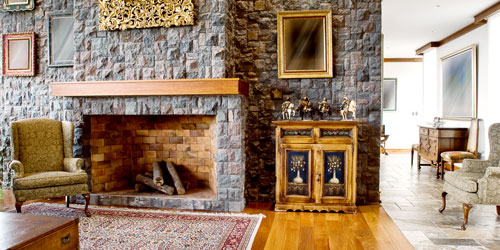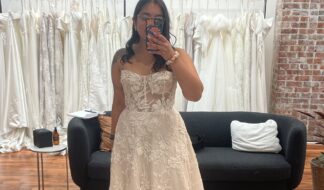
Sometimes it's easier to slap cheap, store-bought "art" on the wall and be done with it. But homes aren't meant to be easy – appliances crap out, dust collects and painting is still a major pain in the butt. So why not put a little thought into what else is covering the walls?
"It's not just decoration," says Ben Kiehl, the managing director of the Robert Kidd Gallery in Birmingham. "You want art that speaks to you, that will remain interesting and intrigue you throughout time, that won't get boring and won't disappear and won't become wallpaper."
Finding that art might mean browsing endlessly through some local galleries, or it could be as easy as grabbing the first piece you see – the one that jumps out like a puppy looking for a family and asks for a place in your home. The purchasing process for a real piece of artwork – whether it's a painting, photograph or sculpture – is purely instinctual, Kiehl says.
"You should buy art because it speaks to you," he suggests.
Do the bright colors give you a lift? Do you like living vicariously through the Italian landscape? Or, gee, maybe you just want nude dudes hanging above your couch.
"Original art almost always carries a story," Kiehl says. "The person loves to sit down and tell you, 'This is where I was when I found this artist, I fell in love with it, we had to jump through all these hoops to get it.' Store-bought art doesn't carry that same kind of romanticism."
Mike Martin, a curator at the Flint Institute of Arts, is blissfully attached to a George Condo piece in his living room, so much that "even if I moved into a space that was already furnished with a specific style, I would hang that in there."
Condo, one of Martin's favorite painters, is best represented stylistically through this particular abstract-meets-surreal-meets-pop-art piece. Martin really has no idea why, but to him, it's "perfect."
To find the best art for your own place, Kiehl makes a few suggestions: consider the type of imagery you like, the medium (sculpture or painting?), the style (abstract or realism?) and the space it's going in. The art should be mood-changing, but more than anything, it should communicate who you are.
"Choosing art should be a reflection of your personal taste," Kiehl says. "Paintings or sculptures should engage your personality and evoke some type of emotional response."
Martin adds: "If you're looking for something to fill a space on a wall, that's when I suppose you could look for something that would go with the drapes. But if you're looking to buy a work of art, it really serves a purpose other than just filling that empty space on the wall. It's something that is important to you and that you own, that you enjoy – not just a thing in your house."
That's why, Martin says, it's important to connect deeper than to its surface; get beneath the work of art and figure out how it makes you feel and what connects you to it.
"It might not necessarily be aesthetically beautiful, but it might be very powerful in what it says, and that appeals to a lot of people," he says. "Not everyone would want something gruesome hanging in their house, but if that gruesome image speaks to the person in a way that is important to them, then they might want to have that in their house."
Art that speaks to you, however, doesn't need to kill your budget (Kiehl suggests checking out student art, which is more economical and can be just as alluring). It doesn't have to be a notable name (all artists, at one time, were under the radar, he adds). And buying it shouldn't be an intimidating process, because enjoying art doesn't mean understanding it, Kiehl says.
"It can be daunting, but the main thing is you always want to buy from the gut," he adds. "If you know in your heart that you really like something, the money almost doesn't even really matter. It's the same way with anything, but artwork is distinct; it's not like buying a car."
When did your car last inspire you? Art, he says, is meant to – conjuring memories and creating a narrative within yourself. For Martin, choosing the art in his place was a cinch: he just bought what he liked.
"By doing that, you'll find you're drawn to a particular type of artwork, a particular style, a particular period, and things will fit together eventually," he says. "That's happened with me. Some of the very first pieces I bought looked nothing like the majority of the work that I owned because my tastes have changed over the years."
Says Kiehl: "Good art finds a place."
In Martin's case, it's his living and dining rooms, where most of the art hangs – for good reason.
"Things in your house that are most important to you, that you feel speaks the most accurately about yourself, you're going to put those in rooms that other people see," Martin observes. "So if you have three works of art and one of them you absolutely love, you're going to put that in your living room – you're not going to hide that away in a spare bedroom."
Even if the living room decor doesn't compliment the art?
"A good work of art would look good in any room," he says, "and it doesn't need to match the sofa!"











